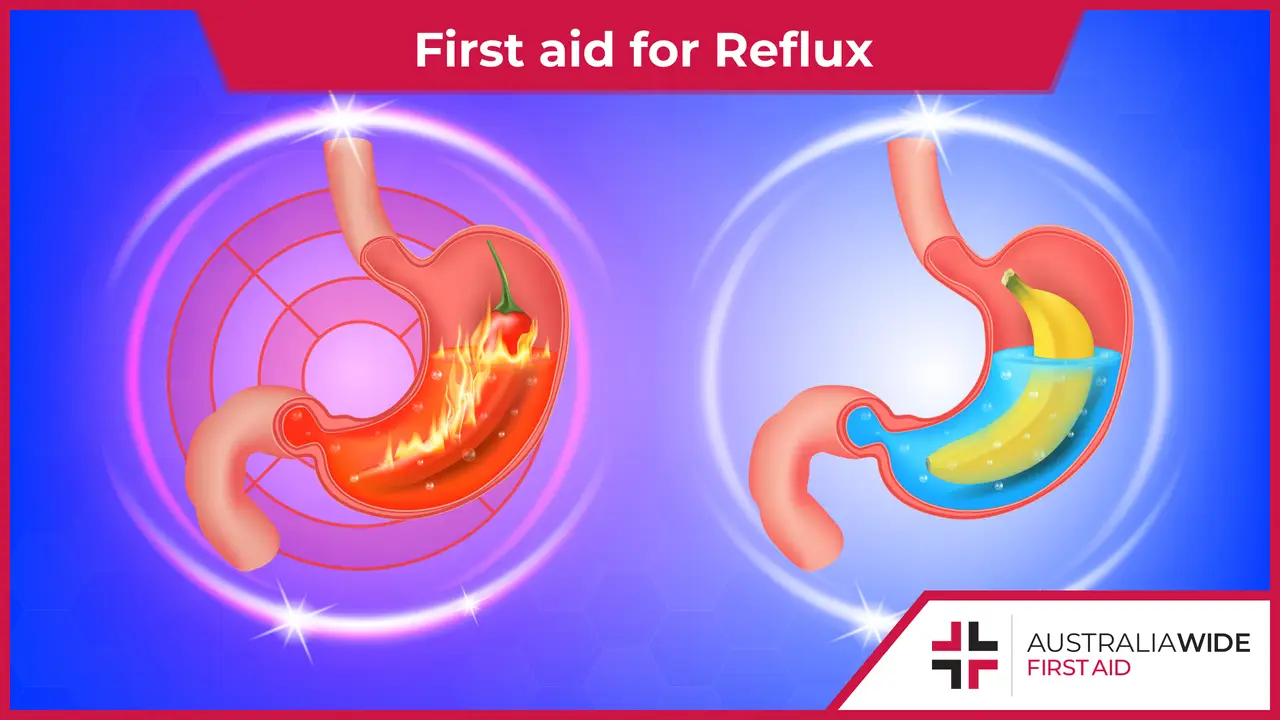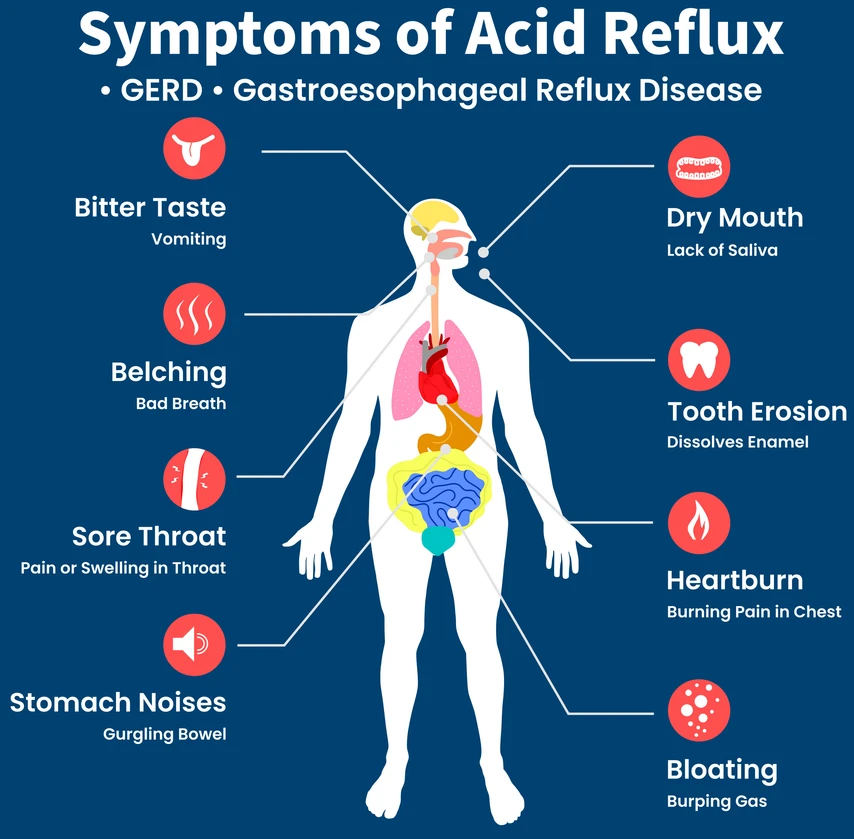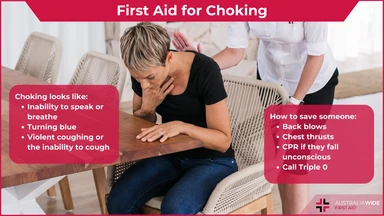First Aid for Reflux (Heartburn)


Reflux, or heartburn, occurs when stomach acid moves back into the oesophagus and causes discomfort.
This is a common biological phenomenon where one in five Australians are said to regularly experience reflux. While heartburn itself is not a health concern, it can be a symptom of a different medical condition. Prolonged reflux issues can induce other health problems.
Knowing heartburn first aid can help reduce the resulting symptoms and discomfort.
Reflux is described as the feeling of pain in your chest area resulting from your stomach acid irritating your oesophagus. This pain can last for a few minutes and up to a few hours. The feelings intensify after eating a large meal, at night, or laying down. Heartburn that has intense or prolonged symptoms is called Gastro-oesophageal Reflux Disease. Also known as heartburn, the cause and symptoms of reflux are not related to the heart. However, sometimes the discomfort from the symptoms affects the chest area.
The scientific explanation for reflux is a problem with the oesophagus. Heartburn begins at the bottom of the oesophagus, or the lower oesophageal sphincter. Normally, food enters the stomach when the lower oesophageal sphincter loosens to allow food to enter the stomach. After the food enters, it contracts again.
Occasionally, the lower oesophageal sphincter does not tighten after food enters the stomach. This can cause stomach acid to back up into the oesophagus. This causes the discomfort in the chest, or reflux.
The relaxing of your lower oesophageal sphincter can be caused by a multitude of factors. The main reason being overeating but can also be a result of obesity, pregnancy, or constipation.
High levels of stomach acid can also force its way back into the oesophagus, causing the burning sensation of reflux. There are certain types of food that can increase your level of stomach acid. This includes food with high acidity, like tomatoes and citrus; high in fat and oils, like bacon and fries; and certain medication, like antibiotics and iron supplements.

Reflux is described as the feeling of pain in your chest area. However, there may be other signs that show that you may have heartburn, including:
Heartburn often passes after a few hours. However, if your symptoms are too much to handle, here are some tips to help you limit the pain:
Reflux is often a result of overeating and is often not a cause for concern. However, there may be times when heartburn can be an indicator for other health problems. Make an appointment with your doctor if:
The occasional heartburn is normal. However, it can share the same feelings of chest pain as a heart attack. If you notice your pain intensifying and you are simultaneously experiencing pain in the arm or jaw and difficulty breathing, contact your doctor immediately.
For more information on how to manage symptoms of acid reflux, check out the video below:
We also have a first aid chart on acid reflux that can be downloaded and printed in A2 size or smaller.
Acid reflux is a condition in which stomach acid rises into the oesophagus.
It occurs when the oesophageal sphincter does not tighten properly and allows acid to flow from the stomach back into oesophagus.
This can cause a burning sensation in the chest, known as heartburn, and lead to oesophageal scarring and damage if left untreated.
There are certain foods that you can eat at home to lessen the symptoms of heartburn, including melon, ginger, and low-fat yogurt.
To learn more about how to identify and manage the symptoms of acid reflux, book a First Aid course with Australia Wide First Aid today.

October 13, 2023
Choking occurs when an object or a piece of food becomes lodged in the throat, blocking the airway. The adult or child will have difficulty breathing, and may lose consciousness. Quick and effective action is essential to prevent severe consequences and death.

September 22, 2023
Knowing how to provide first aid for fluid draining from an ear is crucial to alleviate discomfort and potentially prevent complications.

July 31, 2023
This article covers treatment/first aid for nose bleeds, and also covers all of the common misconceptions and myths about treating a bleeding nose.